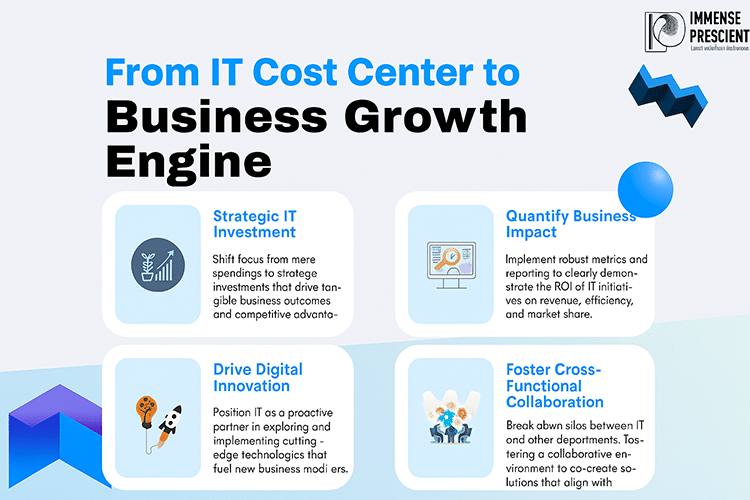From IT Cost Center to Business Growth Engine
Introduction – IT as a Business Growth Engine
For years, IT was seen as a necessary expense a back-office function that kept the lights on but rarely added visible business value. That perception is changing fast. In today’s digital-first economy, IT isn’t just a support function it’s becoming a driver of business growth, innovation, and competitive advantage. The organizations that recognize this shift are setting themselves up to win in the future.
1. Why IT Was Traditionally Seen as a Cost Center
Historically, IT investments were measured in terms of infrastructure upkeep, software licensing, and support staff. Executives asked, “How much does this cost us?” rather than “What can this enable for us?” This mindset led to:
- Budget restrictions limiting innovation
- Underutilized technology investments
- Slow alignment with business goals
2. The Digital Economy Changes Everything
With cloud computing, AI, automation, and advanced analytics, IT is no longer about maintenance it’s about value creation. Businesses now rely on IT to:
- Launch new digital products and services
- Improve customer experiences through personalization
- Enable real-time decision-making with data insights
- Scale operations efficiently without adding equivalent headcount
3. IT as a Business Growth Engine
Forward-thinking companies are reframing IT as an enabler of growth. Here’s how:
- Revenue-Driving Innovation: IT teams collaborate with product teams to design digital offerings that open new revenue streams.
- Customer-Centric Systems: From omnichannel platforms to AI-driven service chatbots, IT is the backbone of customer engagement.
- Operational Agility: Cloud-native IT systems allow businesses to scale up or pivot faster than competitors.
- Strategic Partnerships: IT leaders now sit at the executive table, shaping corporate strategy.
4. How to Transform IT from Cost Center to Growth Engine
Organizations can unlock IT’s growth potential by taking these steps:
- Shift Metrics from Cost to Value – Track IT’s impact on revenue, customer acquisition, and retention.
- Embed IT in Strategy – Make IT leaders part of business planning, not just execution.
- Adopt a Product Mindset – Treat internal platforms like customer-facing products that require iteration and innovation.
- Invest in Talent and Culture – Encourage IT teams to think like innovators, not just troubleshooters.
- Leverage Emerging Technologies – Use AI, machine learning, and automation to create smarter business models.
Conclusion
The era of IT as a cost center is over. In forward-looking businesses, IT is the growth engine powering innovation, efficiency, and competitive advantage. Companies that recognize and act on this shift are not only cutting costs but also unlocking new opportunities for revenue and market leadership.




